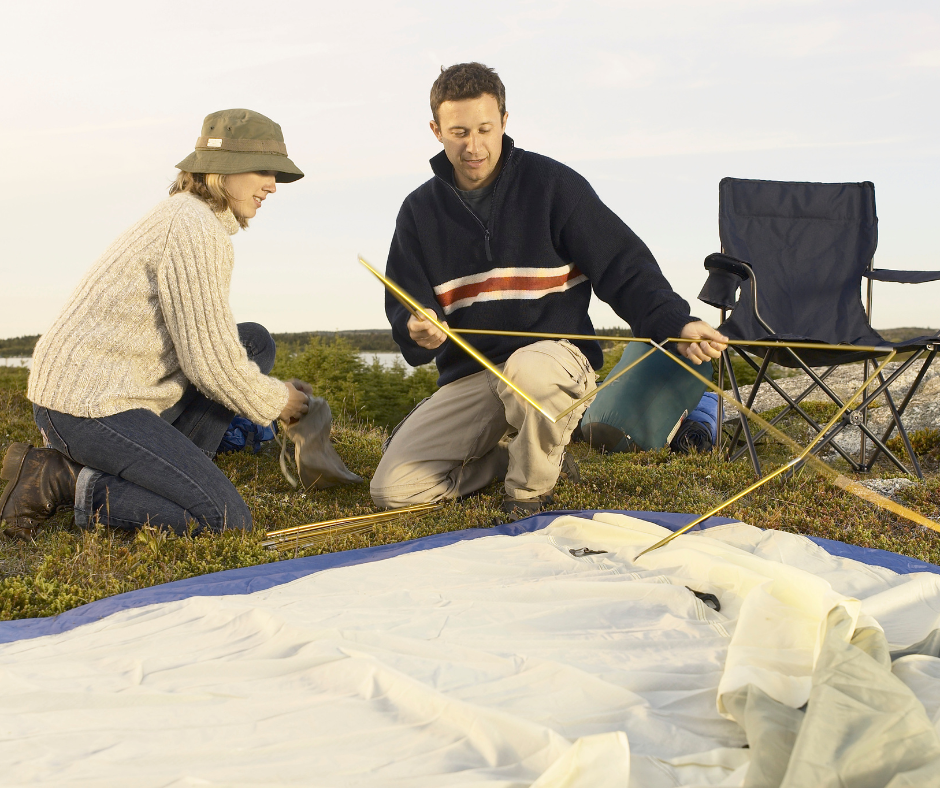
Are you ready to embark on an unforgettable journey into the heart of nature? Do you crave the thrill of sleeping under the stars, surrounded by the tranquility of the great outdoors? If so, then it’s time to get ready for camp!
As an adventurer, outdoor enthusiast, and CEO of Ready For Camp, I’ve spent years exploring the wilderness and perfecting the art of setting up a campsite. Today, I’m thrilled to share my expertise with you, so you too can experience the joy and excitement of camping in nature.
Setting up a campsite isn’t just about pitching a tent and building a fire; it’s about creating a home away from home, a sanctuary where you can relax, recharge, and connect with the natural world. It’s about immersing yourself in the beauty of your surroundings and embracing the simplicity of outdoor living.
But before you dive headfirst into the wilderness, there are a few important steps you need to take to ensure a safe and enjoyable camping experience. So grab your gear, pack your sense of adventure, and let’s get started!
Step 1: Choose the Perfect Location
The first step in setting up a campsite is choosing the perfect location. Whether you prefer the serenity of a secluded forest or the breathtaking views of a mountain peak, the key is to find a spot that suits your needs and preferences.
When selecting a campsite, consider factors such as proximity to water sources, level ground for pitching tents, and access to hiking trails and other recreational activities. It’s also important to check local regulations and obtain any necessary permits before setting up camp.
Remember, the beauty of camping lies in its simplicity, so don’t be afraid to venture off the beaten path and explore new and exciting destinations.
Step 2: Gather Your Gear
Once you’ve chosen a location, it’s time to gather your gear and prepare for your adventure. While the specific items you’ll need will depend on factors such as climate, terrain, and personal preferences, there are a few essential pieces of equipment that every camper should have:
- Tent: Choose a tent that is durable, weather-resistant, and easy to set up. Make sure it’s large enough to accommodate your group and provides adequate protection from the elements.
- Sleeping Bag: Invest in a high-quality sleeping bag that is suitable for the climate you’ll be camping in. Look for features such as insulation, temperature ratings, and water resistance to ensure a comfortable night’s sleep.
- Camping Stove: A portable camping stove is essential for cooking meals and boiling water. Choose a lightweight and compact model that is easy to transport and fuel-efficient.
- Food and Water: Pack plenty of non-perishable food items and clean drinking water to sustain you throughout your trip. Don’t forget to bring a water filtration system or purification tablets to ensure access to safe drinking water.
- First Aid Kit: Be prepared for emergencies by packing a comprehensive first aid kit that includes essentials such as bandages, antiseptic wipes, pain relievers, and insect repellent.
Step 3: Set Up Camp
With your gear in tow, it’s time to set up camp and make yourself at home in the great outdoors. Start by finding a level and clear area to pitch your tent, taking care to avoid rocks, roots, and other obstacles.
Once your tent is set up, it’s time to create a comfortable and functional living space. Lay down a ground tarp or footprint to protect the bottom of your tent from moisture and wear, and arrange your sleeping bags and camping mats for maximum comfort.
Next, set up your camping stove and food preparation area, making sure to follow proper safety procedures and guidelines. Hang food bags and trash bags from a tree or bear pole to prevent unwanted visitors, and store any scented items in airtight containers to avoid attracting wildlife.
Finally, take a moment to appreciate the beauty and tranquility of your surroundings. Whether you’re gazing up at the stars or listening to the sounds of nature, camping is a unique opportunity to disconnect from the hustle and bustle of everyday life and reconnect with the world around you.
Step 4: Leave No Trace
As adventurers and outdoor enthusiasts, it’s our responsibility to protect and preserve the natural environment for future generations to enjoy. That’s why it’s essential to practice Leave No Trace principles whenever we venture into the wilderness.
Leave No Trace is a set of seven guiding principles designed to minimize our impact on the environment and promote responsible outdoor recreation. From packing out your trash to respecting wildlife and staying on designated trails, every camper has a role to play in preserving the beauty and integrity of our natural spaces.
By following these principles and taking action to minimize our impact, we can ensure that our favorite camping spots remain pristine and unspoiled for years to come.
Conclusion: Embrace the Adventure
Setting up a campsite is more than just a practical necessity; it’s an opportunity to embark on an unforgettable adventure and connect with the natural world in a meaningful way. Whether you’re a seasoned outdoor enthusiast or a first-time camper, there’s no better time to pack your gear, hit the trail, and discover the joys of camping in nature.
So what are you waiting for? Adventure awaits – are you ready for camp?
